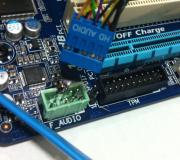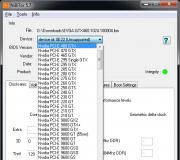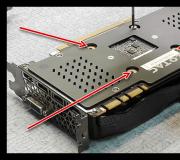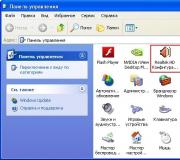The smartphone charger is heating up. The smartphone heats up when charging: what to do? What can be done to eliminate overheating of the power supply
The charger is warming up and got a better answer
Answer from Yergei [guru]
Lately this is when, with the onset of summer? When did the heat start?
The chargers get hot, sometimes quite a bit, this is normal. Pay attention to the time of full charge, if it has not changed so that it becomes noticeable and the charge holds about the same as it should, then everything is in order.
Smelling like plastic and smelling a little is also nothing, especially if it is relatively new. Do not keep the charger under direct sunlight.
If the charging time and battery life have not changed, then it looks like everything is in order.
But still, do not leave the included memory and other e-mails. devices unattended.
Answer from Qwe[guru]
the inlet can warm up, but it shouldn't smell
Answer from GT[guru]
no, this is not normal, at most it should be warm
Answer from Petrovich[guru]
Change your phone battery
Answer from Kirill kirill[newbie]
Chargers are of different power, different quality and that is why a heating battery or charging is normal. Sometimes the charging itself was heated to such temperatures that it seemed that it would now start to burn. Remember the physics lesson, each conductor will heat up from the resistance voltage and current strength, and if you charge an incompletely discharged phone (smartphone), then the residual charge in the batteries gives a strong resistance and charging charges, but the charging unit or battery will get very hot. charge the phone when it turns off, and everything will be okay.
Often novice drivers have a question about why the battery heats up when charging and how normal it is. When the inside of the car's battery starts or seethes, and it begins to heat up, this may suggest to beginners that there is something wrong with the battery. Also, the owners of mobile phones are worried about the fact that the mobile phone "gets very hot" when it is connected to the network. In fact, the heating of the battery during charging does not always mean its malfunction.
In order to dispel fears about the heating of batteries in cars and phones, let us consider some of the reasons why this may occur (by the way, it would be, on the contrary, strange if the batteries did not warm up at all during charging).
Reinsurance: we charge the car battery efficiently and correctly
You need to be aware that if the battery heats up during charging, this is a completely natural phenomenon, especially when the process comes to an end. In order to avoid overheating, it is important to monitor the battery at all stages of its charging - in about the same way as we watch a saucepan or any electrical appliance put on the fire.
Towards the end of charging, do not leave the battery unattended for a long time. If it starts to heat up too much, it is better to lower the current. Of course, charging time may increase, but this is what will allow you to minimize possible risks.

In addition, if your battery is already old, it is important to keep in mind that old car batteries heat up faster and will need to be more frequent to avoid short circuits. Handle your old battery with the utmost care and attention.
Possible manufacturing defect of a new battery
For novice drivers, it will not be superfluous to learn that the very process of boiling the battery can tell why it gets very hot and for what reasons its total voltage does not correspond to the required norm.
For example, when one of the cans is closed due to a factory defect, boiling as a normal and natural process occurs in all serviceable battery compartments. ... There is no boiling process in a closed jar. When measuring the density of the electrolyte, its value in the "dead" compartment does not exceed 1.10 g / cm 3. A battery with such a defect will produce a voltage of about 10.5 volts, and not the prescribed 12-13 at rest. It is better not to try it, but to return it back to the store, or exchange it for a serviceable one.
Possible malfunctions if the battery gets very hot while charging
If you removed the battery from the car and put it on, and later found that it heats up more than necessary, the reasons can be quite understandable and sometimes removable:
- The charger used is defective, or the currents are too high. Try to just reduce them.
- Something happened inside the battery itself. This can be damage to the plates, their crumbling or short circuit. Remedy depends on the level of damage to the plates.
Why does the phone battery heat up when charging
Most often, the concern of phone owners about this has no serious basis:
- If the phone is charging, and there are no obvious signs of overheating, then charging can be safely continued: All mobile phones “warm up” when connected to the network .
- If you are calling, playing games or texting when charging the phone , its temperature will naturally be an order of magnitude higher than usual. In this case, you can wait until the device is charged so as not to worry again.
- If the body of your gadget is made of metal , it will heat up more, but there is no danger in this.
- When connected to a smartphone Wi-Fi or any kind of mobile Internet downloading data will affect the temperature level while charging.
- The phone may get warm because of errors in the firmware system (program code). In this case, try to find an updated firmware version on the Web.
- Checking the heating level of the smartphone while charging can be done using a utility like CPU-Z.
Thus, any battery heats up when charging. In the case of a car battery, it is important to carry out timely process control in order to avoid possible irreversible damage to it. If the phone heats up, most of the time, the concern of users is in vain. But if in doubt, the heating level of the battery during charging can always be checked using special programs.
You shouldn't be confused by the fact that the laptop's power supply gets warm while charging - this is normal. Another question is if the power supply gets very hot and does not cool down after the battery is fully charged. Let's see why this is happening, and what to do to prevent the laptop from overheating.
Heating reason
The reason that the laptop power supply gets very hot when charging is the understated adapter power. The more powerful the adapter, the less heat it gets when charging. But with an increase in power, the size of the power supply will become larger, which negatively affects the perception of the laptop by users.
Therefore, manufacturers select an adapter with the minimum allowable power in the kit for a laptop. You can charge the laptop, but do not be surprised that it gets very hot - the adapter has to work at maximum speed.
The unit converts AC 220V to DC 15-24V. The conversion is carried out by the transformer, and the rectification is carried out by the diode bridge. Depending on the magnitude of the electrical load, both units heat up during operation with varying degrees of intensity.
Typically, the maximum heating occurs in the first 20-30 minutes of laptop operation with the power supply connected. This is due to the fact that the adapter operates under maximum load, while simultaneously charging the battery and keeping the computer running. As a result, the power supply gets very hot.

But if the adapter remains hot after charging, then this is a reason to pay attention to its condition. Why is this happening? In addition to the underestimated power, there may be several more reasons why the power supply gets very hot:
It is also worth worrying about the condition of the laptop and adapter if the power supply heats up during charging so that it cannot be held without unpleasant sensations. Human skin can withstand temperatures of 60-70 degrees, but if the adapter heats up at all 80 degrees, then you will not be able to pick it up.
How to lower the temperature of the adapter?
Now you know why the laptop power supply gets very hot. It remains to figure out how to get rid of the laptop from this disadvantage. You can try the following methods:
- Place the power supply in a place where it can cool naturally. As noted above, the adapter should not be covered with a blanket or any cloth. Also, lying on the carpet and direct sunlight is contraindicated for him.
- Try not to overload the laptop while charging. Wait for the battery to charge, and only then run "heavy" games and resource-demanding programs.
If neither natural cooling nor temporary abandonment of games reduces the temperature of the power supply, then you will have to buy new equipment with more power. But to prevent the laptop from burning out, you need to choose the right power supply, taking into account the voltage. Examine the markings on the laptop case. The parameters of the charger should be indicated there: for example, 19V-2.4A.

Then look at the current and voltage situation on the old PSU, which is getting very hot. The voltage on it must match, and the current strength may be slightly higher.

To get rid of overheating, you should buy an adapter with the same voltage (19V) and higher amperage - for example, 4.7A instead of 2.7A. In this case, the power supply will maintain a low temperature when charging, because the load on the nodes will decrease.
Monitor laptop temperature
You need to monitor not only the condition of the adapter, but also the temperature of all components of the laptop. Determining how they heat up is difficult to touch, so special utilities are used for monitoring: Speccy, CPU-Z, etc. In addition to the power supply, it is necessary to periodically check the temperature:
- Storage devices, especially if the laptop has an HDD rather than a solid state drive (SSD).
- Graphics adapter. The video card heats up especially strongly during games and resource-intensive applications: various graphics editors, multimedia programs.
- Motherboard. The temperature of the motherboard largely determines how other components will heat up.
- Central processing unit. If the CPU overheats, then the system performance drops dramatically.
You can see the maximum permissible temperature of the equipment in its specification, but if you use the Speccy utility, when overheating, the indicator next to the device will turn red.

Another clear sign of an excessive rise in temperature is a freeze and periodic unauthorized shutdown of the laptop. If you encounter such a problem, it is recommended to disassemble the laptop, clean the cooling system and case from dust and replace the thermal paste. In some cases, to maintain normal temperature, you have to install additional coolers built into the cooling pad. Without proper cooling, components can quickly fail, and replacement is costly.

In this sense, the heating of the power supply is not such a serious problem, because in most cases, users experience unnecessary anxiety about the temperature, when in fact the adapter is completely functional.
There are several reasons for a malfunction, and first you need to try to identify them so that it becomes clear how best to act: what can be changed, whether it will be possible to repair something yourself, or is it better to seek help from authorized service centers.
Possible reasons
There are a number of factors responsible for the extreme heating of the device.
Let's dwell on each in more detail:
Overheating elimination methods
If the option of buying a new phone does not suit you with something, then you can replace only the battery itself, preferably together with the charger, but first you need to find out why the battery is heating up when charging, and whether it is to blame for this.
Also, I must say that insignificant heating is not considered a malfunction, since even the manufacturer, as a rule, indicates in the "user manual" that such a "feature" will accompany the owner of the device throughout its operation.

But if, for example, you receive a notification from the system that “charging has stopped because the battery temperature is too high,” then this situation is already abnormal and you need to look for a solution.
So, your phone heats up, and are you going to figure out the reasons? Then the next procedure is for you.
What can be done:


Very important! If the phone is so hot that you cannot touch it directly, and indeed always, you cannot open the battery cover until the phone cools down, as there have been cases when the battery exploded!
The same applies to the leakage of chemicals from the battery. Is something like this observed? Then feel free to throw everything in the trash and carefully pack it in a plastic box, as these components are dangerous to the environment.

Still no one forbids visiting the service center. Of course, the craftsmen working there can ask for a high price for repairs, sometimes coinciding with the cost of the device itself, but only they usually have a consultation or diagnostics free of charge, and you can find out something useful about the causes of the breakdown.
And first of all, if you have the time, be sure to find the "model" of your device on the Internet, on one of the thematic forums, where other users of this gadget share their experience of using it.
Video: iPhone 4 is warming up
On the same sites there are firmwares, if they exist, and all the information on them. The phone should be flashed when it becomes clear that the charging and the battery have nothing to do with it, and the problem that the device is very hot lies in the operation of the software "filling" systems.
Be that as it may, and if the device is under warranty, and it cannot be used without justified fears for its safety, then it would be nice to hand it over for examination, and if there is an effective problem, then you should receive compensation.
And among other things, do prevention:
- do not leave the phone on charging when the power level already shows 100%;
- do not allow sudden changes in temperature, when you take the device out in the cold in winter, make sure that it does not freeze and is in your pocket most of the time.
Is your phone not some kind of cheap, but an expensive flagship? Therefore, it is better to advise not to risk it, but to take it to an authorized service center, where specialists will certainly determine the exact cost of the repair, and, hopefully, they will not deceive you with anything and demand an extra surcharge.
In any business, there are problems that many consider worthy of attention, but in fact are the norm. And there are moments that make you think that it is time to really pay attention to the problem that has arisen. So it is with a laptop. In principle, the laptop charger at the moment it is connected to the network, and the entire charging process must heat up, but to a certain temperature. But if it heats up very much, and even does not cool down after turning it off, you should think about the reasons for this action, in order to eliminate them in time in order to avoid damaging the laptop itself.
The principle of operation of the device adapter, the main reason for overheating
A laptop power supply is nothing more than a separate important element of the device that has great functional significance. Without the correct operation of this part of the entire structure, the operation of the entire device will not be ensured. Without charging, the laptop battery will simply run out, and the gadget itself will be useless. The adapter consists of a transformer and a rectifier, which convert the incoming AC current from the 220 W mains voltage into the DC one needed for the laptop to work.
For each laptop model, the manufacturer took care of the presence of its own charger, which has certain characteristics. Why is charging not working on Asus laptop or some other? The main reason may be that the user uses a charger for his gadget that does not suit him according to its parameters, which were originally set by the manufacturer. It is the discrepancy between the native characteristics and the subsequently acquired adapter that is the main reason why the equipment overheats, or even worse, the device may simply fail.
Additional reasons for charging overheating, situations that may arise
If you look at the back of the charger, there are certain numbers that the manufacturer specifies specifically in order to avoid problems with this element. For example: 20 V-4.5 A. The first number is the permissible voltage, and the second is the current strength at which the charging process takes place. The adapter will heat up quite strongly in the first half hour of operation, maybe even up to 60 °, but the human hand tolerates this temperature well, so there is no need to worry too much about this. But if the temperature rises to 80 °, it is worth worrying here, which means that the device does not work correctly, and there may be a problem with the laptop. Perhaps the charger is not suitable, and it is worth changing it to a more powerful one, but the voltage must be acceptable by the manufacturer, but the second figure, the current, can be purchased more powerful, for example: 5.5 A, which will reduce the load, and the problem can be eliminated.
This can even happen on a visit, if an inappropriate charger is used, and it is better to avoid this. Also pay attention to the following details:
What can be done to eliminate overheating of the power supply
The first method has already been described above. Change the power supply by purchasing a more powerful one, reducing the load during the charging process on the device in this way.
What is a heavy load on a laptop? For example, during the charging process, you work with programs that require a lot of resources: graphics or multimedia programs. Or banal games, especially modern, "heavy" ones. In these cases, the best way to reduce the load is by simply allowing the power supply to work on its own, without additional effort, until the device is fully charged.
Using the power supply correctly means allowing it to cool naturally. Remove all reasons interfering with this process: do not cover, remove from direct sunlight, put on a stand where good ventilation takes place.



